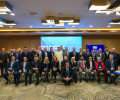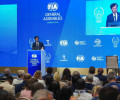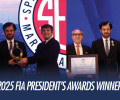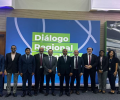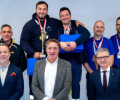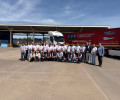2018 FIA AGA – FIA MEMBERSHIP BENEFITS FORUM: COLLABORATE TO INNOVATE
The focus of this year’s Membership Benefits Forum in Saint Petersburg was on collaboration and innovation.
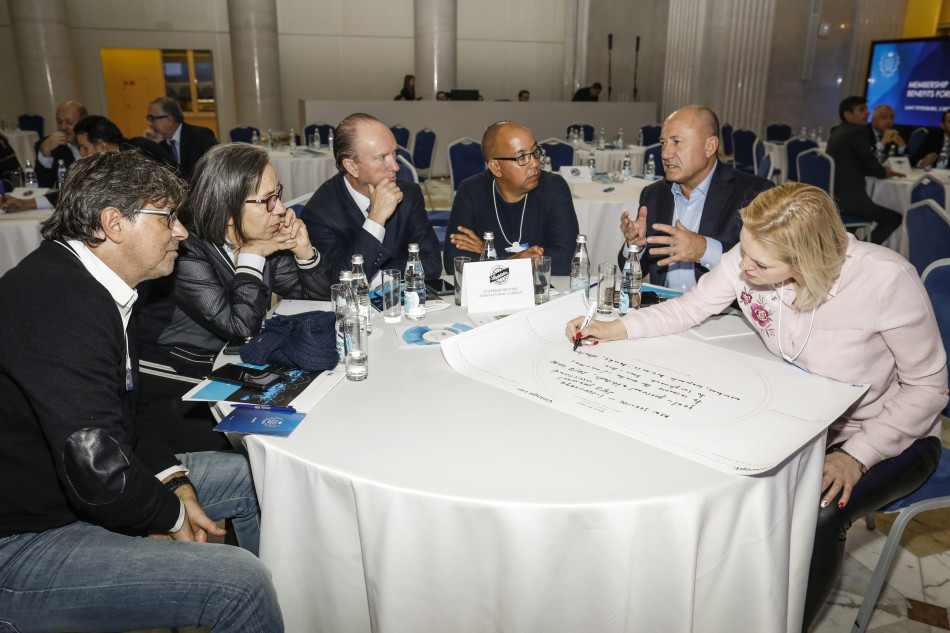
By homing in on collaboration and innovation, the Forum provided an opportunity for delegates to think outside the box to develop their offering and expand Club membership. The Forum also enabled the FIA to showcase to Clubs the resources and services that are available to support their development in this area.
Moderator Martijn Pater of Dutch business strategy company Fronteer, opened the meeting by explaining the concepts of collaborative innovation and co-creation.
He said that far from the modern business world having evolved into an economically predictable environment, markets were now more volatile than ever, with disruption occurring with increasing regularity and rapidity.
The solution, he added, is to remain adaptable through sourcing external innovation partners. “The numbers will tell you that no matter how good the people you have are, there are a greater number of smarter people working outside your organisation than within it,” he said. The keys to successful co-creation, he explained, lie in four pillars: the generation of big and inspiring ideas that lead to innovative thinking, inviting the right partners into the ecosphere of an organisation, openness and interaction with customer bases in order to drive new thinking based on feedback, and the sharing of results.
To illustrate the concept, he called on three Clubs to share their stories of innovation and collaboration. Collins Khumalo, CEO of the Automobile Association of South Africa (AASA) explained how the Club has sought to apply the recommendations of the FIA’s strategic white paper, Vision 2030, to South Africa and the wider ACTA Region.
He firstly outlined the challenges facing Clubs in Africa, including how to stimulate mobility in a region where the new car market is less than 30 % the size of that of Germany, how Clubs can better meet customer needs, the impact changing mobility systems are likely to have, and how the digital space is altering existing Mobility Club business models. The key to meeting these challenges, he said, is collaboration. “ACTA Clubs have a unique opportunity to help each other up the ladder [of capability] while benefiting from the knowledge and experience of bigger and more established Clubs in Region I.” He pointed to the development of partnerships with Uber, increased mentoring of Clubs in the region, the formulation of regional insurance products, the creation of a travel platform promoting travel into and through Africa, and greater customer behavioural analysis as examples of how collaboration with colleagues and customers is benefiting the region.
Didier Bollecker, President of the Automobile Club Association (ACA), France then explained how the ACA took a different approach to growing its membership. “In 2004, we had 50,000 members” he said, “and the marketing cost of bringing each new member onboard was around €150. To grow to a million members we simply didn’t have the budget.”
The Club therefore sought to develop a B2B2C model, entering into partnerships with a variety of organisations that offered membership as part of client packages. “However, while doing this, we systematically promoted the Club’s brand and its services, mainly related to road safety training and legal assistance dedicated to mobility issues. We never provide services without promoting our brand.”
The collaborative efforts meant that the Club now has in the region of 1.5 million members. However, while pointing to such partnerships as a quick and successful form of membership growth, he added that there were caveats, chiefly in the form of a lack of direct contact with members, whose allegiance
is predominantly to the primary service. “There is also the risk that should the partnership come to an end, you have lost that membership base,” he added. “Therefore, we always try to have three-year partnerships as a minimum.”
The third presentation was made by Greig Craft of the Automobile Association of Vietnam who championed mentoring within the FIA Family. “The mentoring projects offered by the FIA are just phenomenal,” he said. “We did a lot of work with the Club in South Australia and also in New Zealand and it was invaluable. We also invested heavily in attendance at conferences and the connections made have had an enormous impact. Collaboration is imperative in getting a new Club up and running.”
Following the presentations, FIA Deputy President for Automobile Mobility and Tourism, Thierry Willemarck, was invited on stage to comment on collaborative efforts. “I think the economic world we are living in and the competition that comes from GAFA (Google, Apple, Facebook, Amazon) and people using those platforms forces us to collaborate,” he said. “Partnership is becoming the key word for the future. There is not one of us of a big enough size today to address the development needed. If you look at Artificial Intelligence, it is cheap to buy, but it only becomes intelligent when you have a big flow of data. A huge data warehouse gathering sufficient information? We cannot do that alone, we need to collaborate.”
He added that Mobility Clubs are no longer being restricted to the automobile. “We have heard about cooperation with Uber, multi-modal offerings, a Club in Australia has bought a bank. Others are developing insurance products to cover the home. We are much more in the culture of assistance and acting as life facilitators. We build that around the channel of mobility, because if you have a water leak at home you can’t be mobile but if you have someone you trust to fix it, relying on the trust of the brand, we have a lot to build on.”
Following this, the forum broke out into an interactive, co-collaboration session where participants were given the chance to put what they had just heard into practice. Focusing on three key topics – Vision Zero, Congestion and Air Quality, and New Services – delegates were encouraged to come up with innovative ideas on how they could address one of these issues, all the while increasing membership growth. Participants were then given one minute to pitch their ideas to the audience. These including a concierge service, improved data management, and targeted advocacy policies towards legislators, vehicle manufacturers, and the insurance industry to support cleaner air and less congestion were pitched as ways to address these challenges.

 Facebook
Facebook Twitter
Twitter